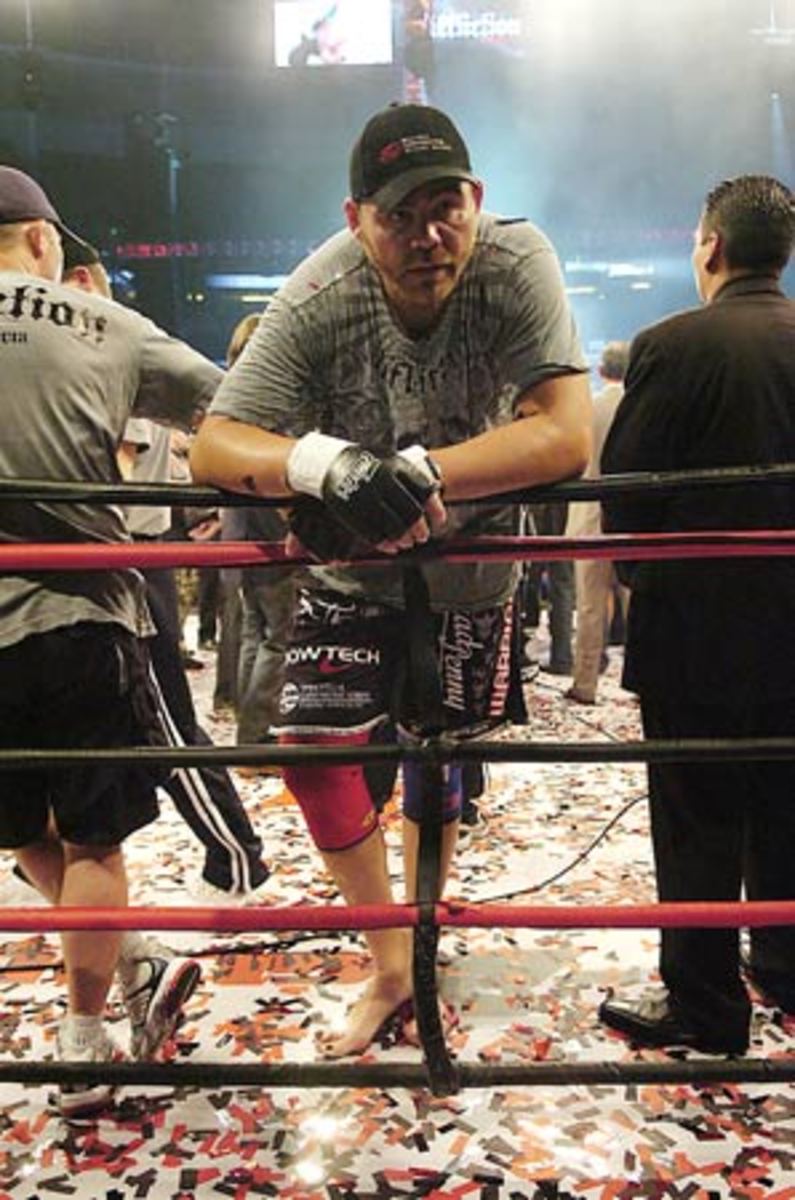If Affliction wants to hang around, it may need a math lesson
In short, Affliction did everything it said it would do, and that's rare for any fight organization, especially one holding its first event.
But as hopeful as the promotion must feel after Saturday night, the question now is, what's next? Exploding out of the gates is one thing, but one good show doesn't make a successful promotion, especially when after shelling out more than $3 million in fighter salaries while selling only $1.6 million worth of tickets.
Looking at the final numbers, it's clear that Affliction overpaid many of its fighters. Any world where Tim Sylvia makes $800,000 (around four times what the Ultimate Fighting Championship decided he was no longer worth) just to show up and take a quick beating from Fedor Emelianenko (who made only $300,000, at least, officially) is a strange world indeed. And when the main event costs almost as much as the total live gate revenue, it's also a world lacking staying power.
The problem for Affliction isn't just the price tag. It has a rich, but shallow talent pool. The organization has built up an impressive heavyweight stable, only to see it whittled down to one champ (Emelianenko) and two credible contenders (Josh Barnett and Andrei Arlovski both looked impressive) after one show. It simply doesn't have enough fighters under contract to keep putting on shows without recycling and reworking the same fighters into different matchups, which is a game of diminishing returns.
This is where the UFC currently enjoys a major advantage. It has the best fighters in every division, from lightweight to light heavyweight, and it also has enough top contenders and mid-level gatekeepers to put on quality pay-per-views every month, with a couple of free shows on Spike TV thrown in for good measure.
If Affliction wants to compete it'll have to go out and sign more talent, which eventually is going to mean luring more big-name fighters away from the UFC. And that means spending even more money.
Consider what they went through to get Arlovski, who is slated to get the next crack at Fedor in October. The former UFC heavyweight champ was making $105,000 to show with a $65,000 win bonus in the UFC. His first fight in Affliction brought him $500,000 in guaranteed pay with a win bonus of $250,000.
That's great news for Arlovski, but if it's emblematic of what it takes to poach the UFC's talent, you have to wonder if it's a sustainable strategy.
Affliction is good for the MMA landscape. It has the backing and the momentum to become a credible competitor to the UFC. In turn, fighter salaries will go up across the board and fighters will get the kind of options they've rarely enjoyed. It also means fans will get more blockbuster shows like the one Affliction put on in Anaheim, which gave a home to so many of the itinerant fighters the UFC wasn't willing to embrace.
As much as the Dana White and the UFC hates it, this competition is good for them, too. It will make their product better in the end and maybe shake them out of the complacency that naturally comes with being at the top of the food chain.
But in order for it to work, Affliction has to stick around. They have to start developing some of their own talent and keep from paying main-event prices for mid-level fighters.
The MMA world needs them to succeed. It needs the new blood and the competition. What it doesn't need, though, is another organization that hemorrhages cash with every event. It might have been a one-time necessity for Affliction to convince audiences it's legitimate, but now it's time to prove the clothing company can last as a promoter.





